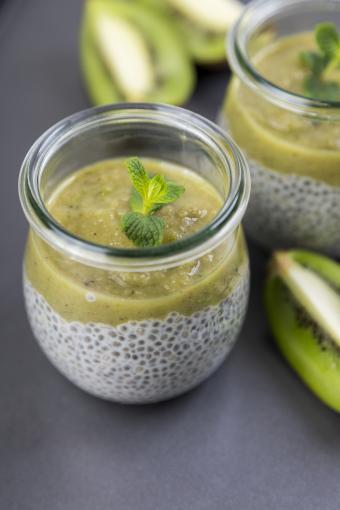
Every few years, a new health food emerges that brings with it a wide range of purported benefits. Recently, chia seeds have enjoyed this particular type of popularity. Interestingly, among the many claims associated with this unique seed is the idea they could be helpful for diabetes.
Chia Seed Basics
Remember the Chia Pets of the 80s and 90s - those little clay heads that would sprout a bright green, leafy toupee? As it turns out, the tiny black and white seeds that powered that whole fad are also a traditional superfood used by many Central American cultures. Taken from the desert plant scientifically known as Salvia hispanica, chia seeds have been used historically as a convenient energizing snack which, given their impressive nutritional profile isn't really surprising.
A tiny serving of just two modest tablespoons would offer the following macronutrients:
| Calories | 139 |
| Fat | 9g |
| Carbohydrates | 12g |
| Fiber | 11g |
| Protein | 4g |
But really, that's only part of what makes chia seeds so useful. They are also loaded with a variety of vitamins and minerals that support myriad biological systems. It's very important to point out, as well, that the fat found in chia seeds is the famous and incredibly healthful omega-3 fatty acid.
In short, chia seeds provide a quick way to introduce protein, micronutrients, healthy fats, and slow-digesting carbohydrates into your diet.
Chia Seeds for Diabetes
How does all of this relate specifically to diabetes?
In theory, the high fiber content of chia seeds, combined with their complex carbohydrates, should aid in glucose control according to Diabetes Self-Management. Additionally, the omega-3 fatty acids might support weight loss efforts and improve cardiovascular health, both which can reduce the symptoms of type II diabetes. Does this theory hold up against scientific scrutiny?
Blood Sugar and Heart Health
A 2007 study, published in the journal Diabetes Care, looked specifically at whether 12-weeks of chia seed supplementation could improve blood sugar levels and cardiovascular health in patients with diabetes. Over the course of the study, 20 volunteers took about 37g of either Salba - a specific variety of chia - or wheat bran each day. Blood sugar levels, body weight, and various markers of cardiovascular health were carefully monitored in both groups.
At the end of the trial, the participants who had been given chia seeds saw improvements in both their cardiovascular health and blood sugar control. It is worth noting, though, that these benefits were only slightly more pronounced than those seen in the wheat bran group. Although it doesn't enjoy the same level of popularity, wheat bran is both more affordable and easier to find than chia.
Weight Loss
By far, though, most people are drawn to the supposed weight loss benefits of chia seeds. In the above-mentioned study, however, the chia seed group didn't lose any weight during their 12-week trial. This study was relatively small, however, and wasn't designed with weight loss as a focus.
Fortunately, a 2009 study in Nutrition Research solved both of these problems by observing how chia supplementation affected the weight 90 volunteers. In addition to weight, the researchers also monitored the body composition of the participants. In all cases, chia seeds did not cause any significant changes in weight or body composition.
Fitting Chia Into Your Routine
If you do decide to give chia seeds a try, then, how can you incorporate them into your diet? Since the tiny seeds have a subtle nutty flavor, it's pretty easy to add them to most recipes and blend them with a huge variety of flavors.
About The Texture

Before you just go tossing chia seeds into every recipe and dish you can think of, however, it's important to consider something unique about their texture. Chia seeds are remarkably absorbant, sucking up enough liquid to expand to about 10 times their normal size.
Since chia seeds are rich in oils, however, this expansion produces a thick gel. When used strategically, this peculiar property makes chia seeds a nutritious and versatile thickening agent. If you don't plan for it, however, that gel can be a surprising and unappetizing development.
Some Ideas
Aim for about two tablespoons of chia seeds per day. You can incorporate them easily into your diet. There are plenty of recipes for chia seeds where the gel is either an asset or not a problem at all.
Most often, chia seeds are used in smoothies and shakes. In this application, the seeds will add a thick, filling texture to your liquid snack without having to resort to high-calorie options. Similarly, the seeds can be used to create a sort of pudding, flavored with your preferred mix of nuts, fruits, and berries.
Do Chia Seeds Help With Diabetes?
Looking at the total of the research, it does appear chia seeds can help with glucose control and cardiovascular function in cases of type II diabetes. However, you can achieve similar effects by using other cheaper, easier-to-find whole grains like wheat bran. If you like chia seeds or want to give them a try, however, you can pick up the versatile little seeds at any health food store.







